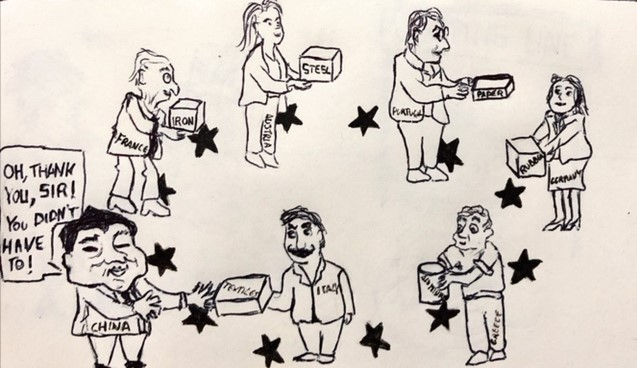Historical Security Council: The Issue of Apartheid in the Union of South Africa (April 2, 1963)
- Agnese Pazzi- Reporter
- Dec 9, 2020
- 2 min read
Updated: Dec 12, 2020
Being enforced legally in 1948, the South African Apartheid was a policy that governed relations between the country’s white minority and its nonwhite citizens. White supremacy had become a central aspect of South African politics long before the apartheid began. The oppressive 1913 Land Act, which was a conglomerate of three different acts, marked the origin of territorial segregation, forcing black South Africans to live in reserves and making it illegal for them to work as sharecroppers, diminishing their economical powers within the country.
World War II and the Great Depression brought major economic distress within the country, convincing the government to strengthen it’s policies of racial segregation. In fact, in 1948 the National Party won the general elections under the slogan “apartheid”, ‘apartness’ in the language of Afrikaans: the policy was then legally implemented. The all-white government began enforcing strict laws of racial segregation, with the aim of separating whites and nonwhites, who were subsequently separated along tribal lines with the premise that there was no black majority, further diminishing their ability to unite and their political power.
By 1950, the government had banned interracial marriages, and passed the Popular Registration Act which provided the basic framework for the Apartheid, classifying citizens of South Africa by race: Bantu (Black Africans), Colored (mixed race) and white. Later on, “Pass Laws” were enforced, requiring non white citizens to carry documents authorizing their presence in restricted areas. This led to the creation of separate public facilities, limited activities of nonwhite labor unions and denied non white to take part in the government. From 1961 to 1994, more than 3.5 million black South Africans were forcibly removed from their homes and placed in the Bantus, 10 homelands for nonwhites created by the government.

Cartoon by Aidyn Despiau-Vazquez
The 1960s mark the uprising of opposition towards the apartheid in South Africa, ranging from demonstrations and protests, to armed resistance. Opposition groups such as the African National Congress (ANC) and the Pan Africanist Congress (PAC), organized a mass meeting in 1952 during which the attendees burned their pass books. This led to the arrest of 150 people who were charged with high treason. One of the most violent demonstrations against the segregation policy took place in Sharpeville on March 21, 1960, in which police opened fire against protestors, killing 96 black South Africans. Soon the ANC and PAC were forced underground, and resorted to armed struggle. Nelson Mandela paraded his support for the ANC. He was arrested in 1962.
In 1961 South Africa was forced to withdraw from the Commonwealth and in 1985 both the United States and the United Kingdom imposed selective economic sanctions on the country, due to their intolerance towards the apartheid. Under international pressure, the National Party government abolished the past laws and legalized interracial marriages. In 1989 F.W. de Klerk rose to power in the South African government, effectively ceasing the National Party’s power. The newly appointed government repealed many segregation laws that formed the legal basis of the apartheid. In 1990 de Klerk freed Nelson Mandela and a new constitution was formed in 1994. That year’s elections led to the creation of a coalition government with a non-white majority, marking the end of the Apartheid, officially..



Comments